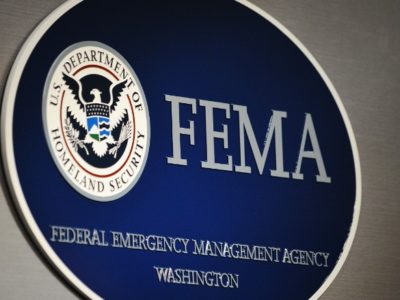Ninth Circuit Dumps U.S. Forest Service’s Sierra Plan, Bureaucratic-Speak

The U.S. Court of Appeals recently issued a major decision invalidating the U.S. Forest Service’s 2004 Plan directing the USFS’s management of the 11 national forests (totaling 11.5 million acres) in the Sierra Nevada range. A divided Ninth Circuit panel found that the environmental impact statement accompanying the Bush Administration plan–which loosened logging and grazing restrictions previously imposed in the waning days of the Clinton Administration–violated the National Environmental Policy Act.
Writing for the majority, Judge William Fletcher ruled that the Forest Service’s environmental impact statement prepared in connection with the Forest Plan was defective in failing to sufficiently analyze the environmental consequences of the 2004 Plan on fish species inhabiting the forests. In dissent, Judge N.R. Smith argued that the EIS was legally adequate, asserting that the majority’s interpretation represents an “inappropriate and substantial shift in our NEPA jurisprudence” by “freely allowing courts to substitute their judgments for that of the agency.”
The decision in Pacific Rivers Council v. U.S. Forest Service undoubtedly represents a major development in both NEPA jurisprudence and federal forest management. The intersection of these two subjects represents one of the more muddled areas of environmental law, and the decision in Pacific Rivers Council is unlikely to change that.
Rather than parse the merits, however, I’d like to offer two other observations relating to the Ninth Circuit’s decision in Pacific Rivers Council: first, the lengthy amount of time it takes to litigate these major lawsuits over U.S. forest policy seems troublesome. The administrative action successfully challenged in this decision was taken, after all, in 2004, fully eight years ago. Now it’s back to the drawing board for the U.S. Forest Service and the Sierra planning process. Perhaps it’s time to consider replicating the system of judicial review applicable in federal litigation arising out of USEPA’s regulatory activities under various pollution control statutes: filing litigation directly in the Courts of Appeals, with the federal agency serving as the principal fact-finder rather than a district court. That would likely reduce the Jarndyce v. Jarndyce pace of federal natural resources litigation–at least a bit.
Second, especially worthy of note is Judge Fletcher’s typically-astute and -polite criticism of the exceedingly impenetrable language used by the Forest Service in its Sierra Plan EIS. Fletcher quotes the following passage from the EIS, noting with understatement that it contains “more than the usual amount of obfuscating bureaucratese”:
“The spatial location of strategically placed area treatments (1) under Alternatives S1 [the 2001 Framework]and S2 [the 2004 Framework] are the same, but they are different than previously considered. For example, analysis in the [2001 EIS] was based on the assumption that the area treatments would be placed (2) primarily on the upper two-thirds of slopes, thus minimizing overlap with RCAs (3) associated with perennial, intermittent, and ephemeral streams. However, this assumption is no longer valid. Consequently, under Alternatives S1 and S2, treatments are not limited to any geographic position. (4) As a result, more treatments within RCAs are expected. (5) Alternative S1 requires that portions of treatment areas be left in an untreated condition. (6) It is likely that riparian areas would be priorities for retention to meet this requirement. (7) Alternative S2 does not require retention of untreated areas within treatment units so that fire behavior and fire effects are effectively reduced within the entire unit. (8)”
Need a translation? I thought so. Fortunately, Judge Fletcher provides it, via the following footnotes to the above text:
(1) There is no definitions section in the 2004 EIS. From usage in the EIS, it is apparent that “treatments” means logging and/or prescribed burns.
(2) In standard English, “placed” means “conducted.”
(3) “RCAs” are Riparian Conservation Areas.
In its brief to this court, the Forest Service misstates the meaning of the acronym. It indicates that RCAs are Resource Conservation Areas. See Response Brief at 33 (“Resource Conservation Areas (‘RCAs’)”). In the context of this case, the difference between “riparian” and “resource” is important. “Riparian” is a precise term, meaning something related to the bank of a river, stream, or other body of water. “Resource” is a general term, meaning anything from a natural resource such as trees to a financial resource such as a bank account.
(4) This sentence is misleading. “Treatments” (i.e., logging and burning) under Alternative S1 (the 2001 Framework) are more geographically limited than “treatments” under Alternative S2 (the 2004 Framework).
(5) This sentence translated into standard English: “As a result, more logging and burning close to streams are expected under the 2004 Framework.”
(6) This sentence translated into standard English: “The 2001 Framework requires that certain areas not be logged or burned.”
(7) This sentence translated into standard English: “It is likely that under the 2001 Framework riparian areas would not be logged or burned.”
(8) This sentence translated into standard English: “The 2004 Framework allows logging and burning close to streams in order to eliminate trees everywhere in a given ‘treatment unit’ as a means of reducing the risk of fire.”
Judge Fletcher concludes his sermon on Plain English for Forest Planners with the following admonition and citation: “We remind the Forest Service: `Environmental impact statements shall be written in plain English…so that decisionmakers and the public can readily understand them. Agencies should employ writers of clear prose or editors to write, review, or edit statements.’ 40 C.F.R.§ 1502.8.”
Amen and well-said, Judge Fletcher.







2 Replies to “Ninth Circuit Dumps U.S. Forest Service’s Sierra Plan, Bureaucratic-Speak”
Comments are closed.